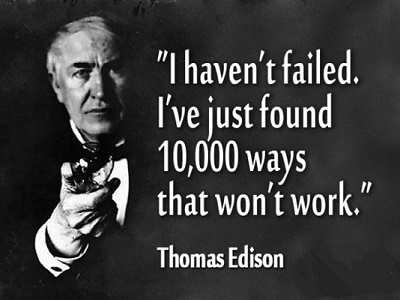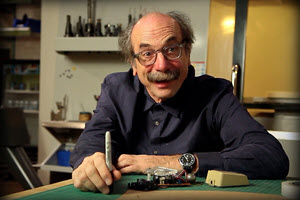A penny for your thoughts
Deep Thoughts from Jack Handy: For upon |The methodology commonly referred to as design thinking is a proven and repeatable problem-solving protocol that any business or profession can employ to achieve extraordinary results.
Design thinking is a concept that centers around applying creativity and innovation to our actions, decision-making, and problem-solving as human beings. More to the point, it focuses on the impact that this creative and innovative thinking has on individuals. As a concept, design thinking can be used to enhance, foster, and learn how to apply empathy for what is truly important…the end user. Deep Thoughts from Jack Handy.
There are five core principles in design thinking:
- empathize
- define
- ideate
- prototype
- test
Understanding how to implement design thinking is a powerful way of learning empathy for the end-user. It teaches how to solve another person’s problems by providing creative and innovative solutions that relate to his or her needs.
Let’s take the five principles and break them down on how to identify a problem, and come up with solutions to resolve it. Deep Thoughts from Jack Handy.
1. Empathize
Empathy is the first step in design thinking because it is a skill that allows us to understand and share the same feelings that others feel. Through empathy, we are able to put ourselves in other people’s shoes and connect with how they might be feeling about their problem, circumstance, or situation. Some questions to consider: Deep Thoughts from Jack Handy.
- What is the person feeling?
- What actions or words indicate this feeling?
- Can you identify their feelings through words?
- What words would you use to describe their feelings?
The list above is a few guided questions that can help you learn how to identify the problem and how others are feeling about it.
2. Define
The next step is to define the above feelings and identify the main problem to be solved. You have to ask for more clarification, “What kind of problem or problems are there? What’s happening? Who’s involved? What does that really mean?” The problem has to be defined clearly to be able to respond to it in the most effective and relevant way. Therefore, the framing of the problem should help find meaningful solutions. Deep Thoughts from Jack Handy.
3. Ideate
This process is where ideas are generated. You can learn empathy in different ways to find solutions to a problem — there is no single right way for a great idea. Here are a few strategies that you can encourage:
The Ideate step helps to see things from different perspectives. It allows you to step outside of what you might think is the obvious solution and instead, generate ideas outside of your own realm.
4. Prototype
Now the fun begins. The prototyping phase is where you take the above learnings and create the solution to the problem. A prototype can be changed, altered, re-evaluated, and recreated many times based on the needs of the users. This process also helps recognize that failing is part of learning and that it’s ok to fail. Deep Thoughts from Jack Handy.

Failure, however, needs to be analyzed so that you learn and grow from your mistakes. Ask these questions:
- Why did we fail?
- What worked?
- What didn’t work?
- How can we improve to help the user next time?
- Is this solution feasible? Is it manageable?
- Are these changes designed with the user in mind?
5. Test
During testing, empathy plays a key role in the shaping of the user’s experience. Remember to focus on showing and not telling. This helps the users to create their own experiences, and also helps to identify how to improve their experiences next time. The opportunity for empathizing is important at this stage because one is able to see the user’s experience and hear his or her thoughts, feelings, and ideas. Testing also helps to shape our point of view in relation to the user’s point of view. Deep Thoughts from Jack Handy.
Below is some additional information on design thinking that may be helpful:
The Design Kit method cards are step-by-step guides to help you unleash creativity and come up with new answers to difficult design problems. The methods are presented in 3 categories: inspiration, ideation, and implementation.
Service Design Tools
Servicedesigntools.org is an open collection of tools used to design processes and complex systems. The site tools and activities are oriented towards service design but a lot of them can still be applied and used for product design as well.

Here’s a great video by 60 Minutes covering an interview with David Kelly.
David Kelley is an early founding member of what would later become IDEO as well as a leading figure in the creation of the d.school. Kelley is one of the pioneers of the Design Thinking methodology and is still engaged in its promotion and development. Deep Thoughts from Jack Handy.
The interview aired on 60 Minutes provides some insight into David Kelley’s approach to Design Thinking, as well as how it is applied at IDEO and the d.school
The article was originally published here.


Comments are closed.